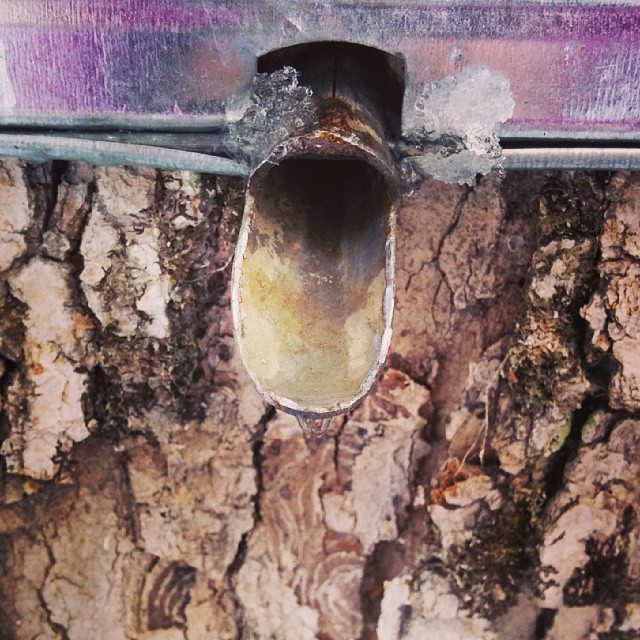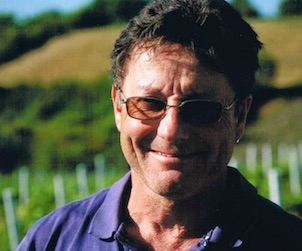by Shaun Smith
The second-smallest of Spain’s 17 comunidad autónoma (autonomous communities), La Rioja is the country’s largest producer of wine. Last September, with camera in hand, I spent a week soaking up Riojan wine, food and culture as a guest of the Tourist Office of Spain and Iberia Airlines.
The Ebro River Valley

Viewed looking north into Pais Vasco (the Basque Country) from the Finca Valpiedra winery, the River Ebro is the life blood of La Rioja. Spain’s largest river, the Ebro forms much of the northern border of the comunidad autónoma La Rioja. The overall wine producing region of the Ebro valley falls under the auspices of the Denominación de Origen Calificada Rioja and extends by 15% into Pais Vasco and 5 % into Navarra to the northeast. On a distant hilltop can just be seen the town of Elciego, home of the famous Marques de Riscal winery, and beyond towers the ridge of Kantauri Mendileroa in the Sierra de Cantabria, the northern slope of the river valley. During harvest in September, migrant workers at Finca Valpiedra pick La Rioja’s most important citizen: the tempranillo grape, the foundation for almost all red wine produced in the region, comprising over three-quarters of the annual grape crop.
Wine

Wine is everywhere in La Rioja. In the capital city of Logroño, even the sidewalks are paved with grapes and during the festival of San Mateo (Sept 21), as the wine harvest begins, the city’s main fountain flows red. Outside the town of Briones, at the entrance of the Dinastia Vivanco Wine Museum, the architecture frames a panoramic view northeast across the vineyards toward San Vincente de la Sonsierra. A stained glass window is just one of many wine-inspired artworks found at the Bodegas Ontañón Bodega-Museo, in Logroño. Meanwhile, gents in the town of Ezcaray enjoy some tapas and tinto before heading off to dinner.
R. Lopez de Heredia Vina Tondonia

Maria José Lopez de Heredia (lower right), stands in the doorway of the wine shop built by the founder of her family’s bodega, her great-grandfather Don Rafael López de Heredia y Landeta. One of Spain’s most prestigious wineries, Bodegas López de Heredia Vina Tondonia, in the city of Haro, is a remarkable marriage of old and new. Today, Don Rafael’s shop—built in 1910 for the Universal Exhibition in Brussels—actually stands inside Tondonia’s ultra-modern, flask-shaped boutique, which itself was designed in 2002 by the London-based Iranian architect Zaha Hadid to celebrate the winery’s 125th anniversary. Below ground, in the tasting room of Tondonia’s cellars, an old vine crowned by an enormous cobweb forms the center piece of the tasting table. The web is not just for atmosphere, says Maria José, its spiders protect the cellared wine from a species of moth that eats cork.
Muga

Juan Muga (top right) leads a wine tasting at his family’s bodega in Haro. Barrels are toasted on-site at the winery’s cooperage, and in the cellars can be found vintages such as this 1970 Prado Enea Gran Reserva dating back many decades. Founded in 1932, Muga is one of the largest wine makers in the D.O.Ca. Rioja, the members of which sold over 235 million litres of wine worldwide in 2009, representing 40% of all Spanish wine sales.
Riojatrek

Maria Grijalba’s family has been making wine in La Rioja for generations. On her small vineyard outside the city of Fuenmayor she shows visitors how to use a refractometer (bottom left) to test the sugar content of tempranillo grape must (center) prior to harvesting. In the cellar of her bodega she uses a wine thief to conduct a barrel tasting. Grijalba’s company, Riojatrek, is part of a burgeoning oenotourism industry in La Rioja.
Gastronomy

Wine may be the raison d’etre for any trip to La Rioja, but gastronomy in the region also excels. In Logroño, Chef Ignacio Echapresto (upper left) serves a cork-shaped torchon of foie gras with toasted brioche and a Moscatel reduction at the tiny Restaurante 8-20. At Bodegas Ontañón, visiting chef Pilar Fernandez, owner of Meson San Anton, teaches visitors how to make potatoes Riojan, a classic stew of spuds, chorizo and peppers. Bar Sebas (bottom left), in Logrño’s Calle Laurel district, offers wedges of tortilla from a window that opens directly onto the street. The elegant Viena Pasteleria, owned by Mabel Rodrigálvarez (bottom right), is where Logroño’s smart set treats itself to exquisite hand-made chocolates, pastries and hot chocolate.
Calle Laurel

In Logroño, Calle Laurel and surrounding streets are a mecca for pintxos and tapas lovers. Till late in the night, people of all ages crowd these narrow pedestrian ways, chatting with friends, drinking glasses of crianza and noshing on sandwiches of fried mushrooms or pata negra, wedges of unctuous potato tortilla, and clay bowls of stewed tripe or chorizo. The small neighbourhood is home to 70-odd tapas bars and each, it is said, serves its own specialty.
El Portal de Echaurren

In the town of Ezcaray, near the western border of La Rioja, chef Francis Paniego (above) and his mother Marisa Sanchez, run La Rioja’s only Michelin-starred restaurant, El Portal de Echaurren. Part of the posh Hotel Echaurren owned by the family, El Portal has two dining rooms and a bifurcated kitchen. One side serves traditional Riojan cuisine, prepared to Marisa’s exacting standards, while the other offers more experimental molecular-influenced creations from Francis. Marissa’s other son, José Felix, is the establishment’s sommelier.
Antonio Naharro

The tradition of hand-crafted pottery in La Rioja dates back to pre-Roman times. Today it is a dying art, as machines have taken over much of the production. Antonio Naharro is one of only half-a-dozen potters left in the region. Shown here at his wheel in his workshop in the town of Navarrete, Naharro is a 5th-generation potter who has passed his trade on to his own son. Naharro owns an extensive collection of antique pieces from La Rioja such as this 16th-century wine jug (bottom right), the classic design of which is still widely used today.
Arnedillo

Since the 1800s, Spainiards have travelled to the small village of Arnedillo, in the southeast of La Rioja, to take “the waters” at the Hotel Balneario. Built into the side of Encineta Mountain, where a naturally mineralized hot spring flows into the Rio Cidacos, the spa provides such treatments as Roman baths, full-body mud wraps and Vichy massage. As if to battle the positive effects of these therapies, in the spa’s dinning room patrons enjoy traditional, calorie-laden Spanish fare, such as cochinillo (roast suckling pig) and croquetas (deep-fried béchamel). Along the river’s banks grow wild hops, quince and almond trees. Overlooking the village are the ruins of the 10th-century Arnedillo Castle.
Anguiano

On July 22nd and on the last weekend of September each year, heroic young men in the mountain village of Anguiano, in the Sierra de Camero Nuevo, don yellow skirts and rainbow-striped vests to engage in the Danza de los Zancos de Anguiano. Standing on pointed wooden stilts and clacking castanets, they run spinning in circles down a treacherously sloped cobblestone lane leading from the village’s church to the main square. This is done in honour of Mary Magdalene, though no one knows exactly why. Thousands of people come out to watch the event, which lasts less than 20 minutes. In a successful run, the dancer makes the trip to the bottom without falling. More often, balance is lost and the dancer barrels into the crowd, where he is caught and pushed back upright to continue his descent.
Suso and Yuso

At the village of San Millán de La Cogolla, the Suso and Yuso monasteries are said to be the cradle of the Castilian language. Suso (top right), high in the mountains, is today an historical site, but it was here, in the 10th century, that the monk San Millán is believed to have put the first words of Castilian to paper in a document that is today called the Códice Emilianense. From Suso’s window, one can see Yuso below, a functioning monastery which holds the remains of San Millán, and where Benedictine monks are tasked with the care of a vast library of archival material. A frequent stopping place for pilgrims walking the French route of the Santiago Way, Yuso stands adjacent to the Hosteleria de San Millan, a four-star Parador that provides luxurious relief for weary feet. Reflected in the hotel’s copper sign above can be seen the facade of the Yuso monastery.
 Shaun Smith is a chef-turned-food writer based in Toronto. Read his CBC Cookbook column here and visit shaunsmith.ca to find out more.
Shaun Smith is a chef-turned-food writer based in Toronto. Read his CBC Cookbook column here and visit shaunsmith.ca to find out more.





